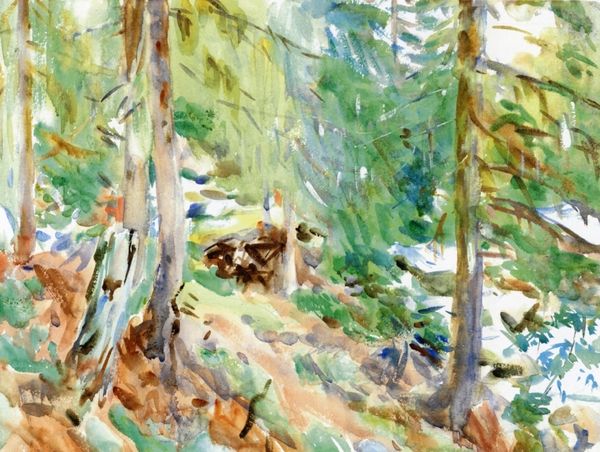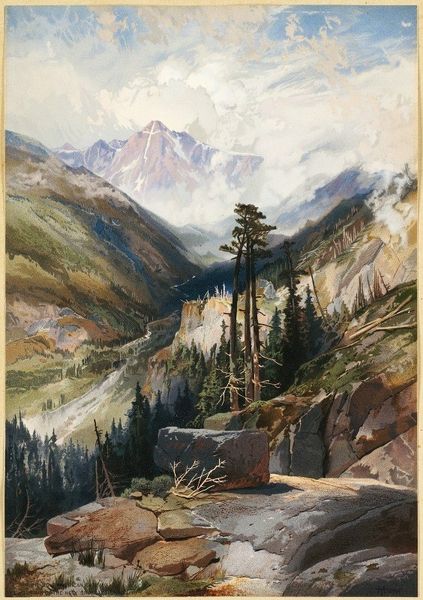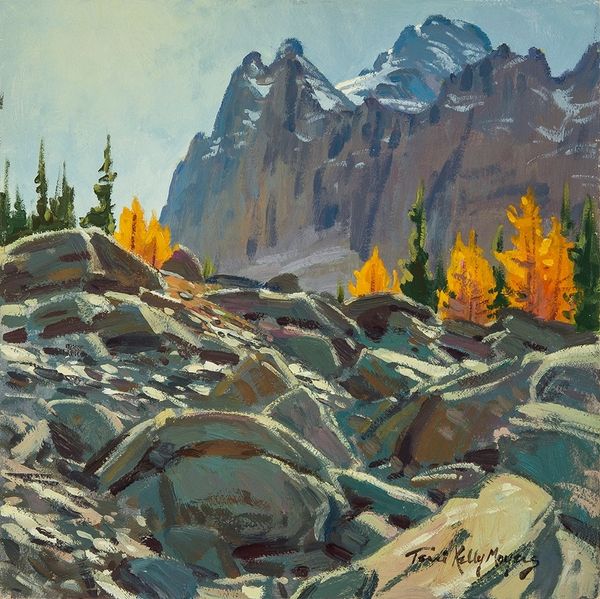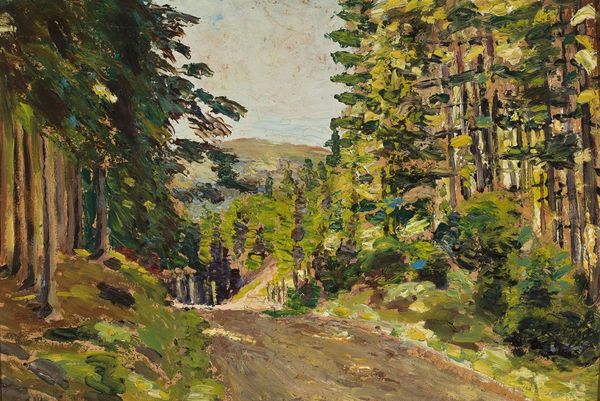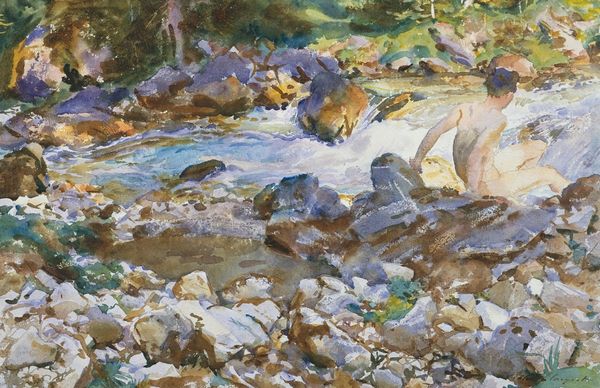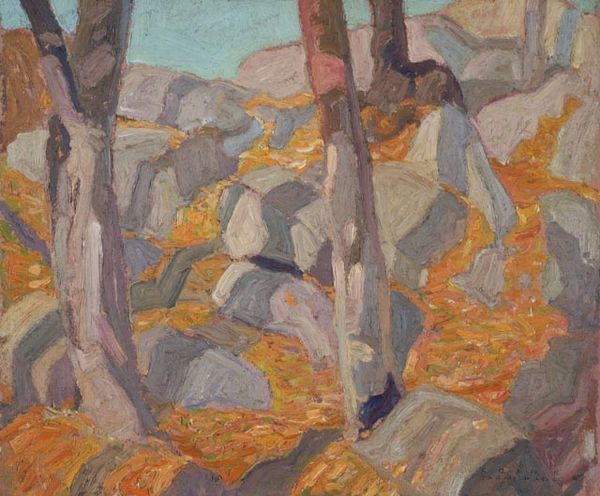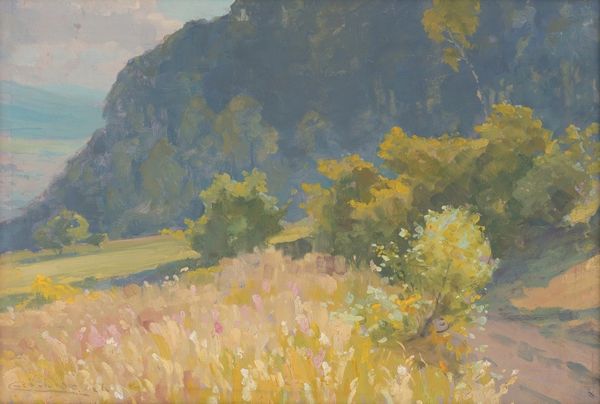
#
landscape
#
impressionist landscape
#
possibly oil pastel
#
nature
#
oil painting
#
acrylic on canvas
#
naturalistic tone
#
seascape
#
animal drawing portrait
#
natural environment
#
watercolor
Copyright: Public Domain: Artvee
Editor: So here we have Ľudovít Čordák’s “Tatra Motif,” created in 1935, with what seems to be oil on canvas. It has a subdued but earthy tone, dominated by greens and grays. It seems like a very serene landscape. How do you read this piece? Curator: This image presents an opportunity to examine landscape painting not merely as representation but as a product of material interactions. Consider the oil paint itself - ground pigments suspended in linseed oil. Its very composition dictated, in part, the texture and the light achievable here. How do you think the impasto, or lack thereof, contributes to our understanding? Editor: I notice the paint is applied pretty smoothly for the most part. It gives it this dreamy feel, like you’re looking at a memory, not necessarily a scene right in front of you. Curator: Precisely. This smoothness hides the labor, obscuring the artist's hand and distancing us from the physical act of creation. Think about the extraction of the pigments, the refining of the oil; these processes, often invisible in the final work, connect this seemingly idyllic scene to a wider network of industrial activity. Consider the brushstrokes. What kind of labor would be necessary to create this on a larger scale, if that were his commission? Editor: That’s interesting. I hadn’t really thought about what’s *not* apparent in the painting. You're right - it doesn't look like it would take much effort at all, even though I'm sure it did. And viewing art as an end result of materials and processes is completely changing my perspective. Curator: Consider also how access to these materials – canvas, pigments, oil – would have shaped Čordák’s practice, the opportunities and constraints. Thinking about the 'means of production,' as it were, encourages us to see this landscape not as a neutral observation but as a product of a specific historical and material context. Editor: I am beginning to understand painting in a new light, seeing it as a physical and material product instead of just a window into another world. Thank you!
Comments
No comments
Be the first to comment and join the conversation on the ultimate creative platform.

